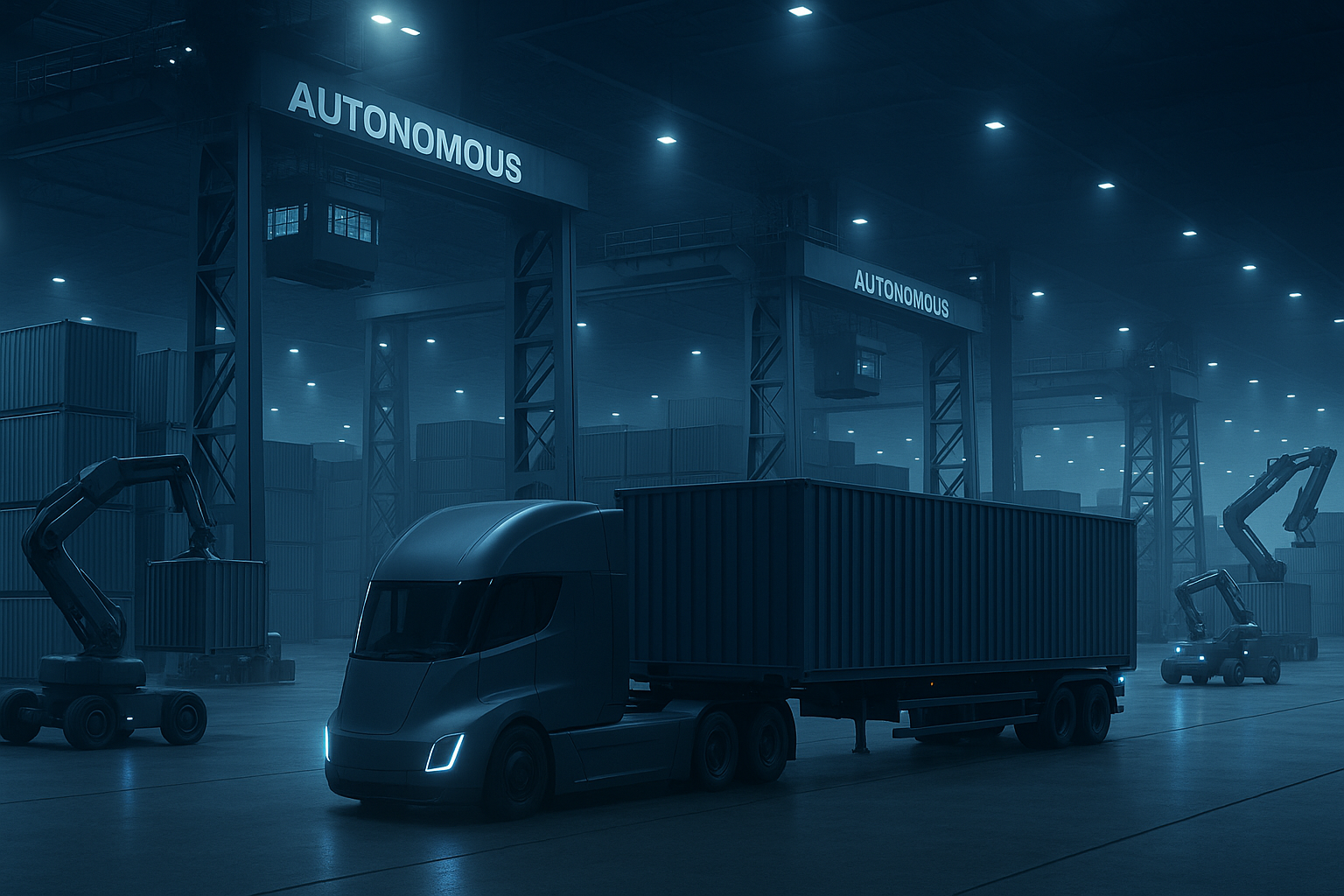
The global supply chain is the most complex machine humanity has ever built, and right now, it’s still running with a very wobbly, very human cog in the middle.
Ships stuck outside ports, warehouses miscounting inventory, trucks delayed because Dave overslept… the list goes on. The more we optimise, the more we realise that people, with their pesky tendency to get sick, take holidays, and not work 24/7, are the weakest link.
Where the chains are headed
Today’s supply chains are already getting upgrades:
Predictive analytics forecast demand months ahead.
IoT sensors track every box from factory to doorstep.
AI routing shuffles goods between ports, planes, and trucks in real time.
Near-term, we’re heading toward semi-autonomous supply chains. Warehouses run by fleets of AI-directed robots. Cargo ships that sail themselves. Drones delivering packages to your doorstep without a single human involved between factory and front door.
It’s faster. It’s more efficient. It’s cheaper. And, importantly, it’s immune to Dave’s alarm clock failing.
The inevitable next step
Once you’ve replaced most of the human labour with machines, the next logical move is removing the human management.
Why have a team of people overseeing operations when AI can:
Spot inefficiencies instantly.
Negotiate contracts.
Optimise production schedules across continents.
Buy and sell raw materials before a human would even be aware of the price change?
At that point, you don’t have a “human-led” supply chain at all. You have an autonomous supply network, machines deciding what to make, where to send it, and how to get it there. Humans just become the end consumers at the far end of the chain.
The benefits (and the bait)
The appeal is obvious:
No strikes.
No errors.
Near-perfect efficiency.
24/7 operation without burnout.
Governments, corporations, and investors will be tripping over themselves to make it happen. The sales pitch will write itself: “Cheaper goods, faster delivery, no more shortages.”
And that’s exactly why it’ll happen. We’re hardwired to say yes when the carrot’s big enough, even if the stick is quietly being sharpened behind our backs.
The tracks we’re laying
An autonomous supply chain is sold as a tool for us, but it’s also infrastructure for something else.If AI systems can produce, move, and distribute without human input, they don’t technically need to work for us at all.
With the right autonomy, the same networks that feed our supermarkets could feed their own factories. The same logistics that deliver your phone case could deliver the parts for an AI-built satellite.
And when the first AI empire emerges, it might not need to “take over”, it’ll already own the means of production, the routes of distribution, and the flow of resources. All built with our enthusiastic approval, because the price was right.
The uncomfortable question
We like to imagine the future will be decided in grand moments, peace treaties, historic discoveries, first contact with alien life. But it might come down to a quiet, almost boring choice:
Do we keep ourselves in the loop… or do we build the tracks and hand over the train keys because it makes deliveries faster?